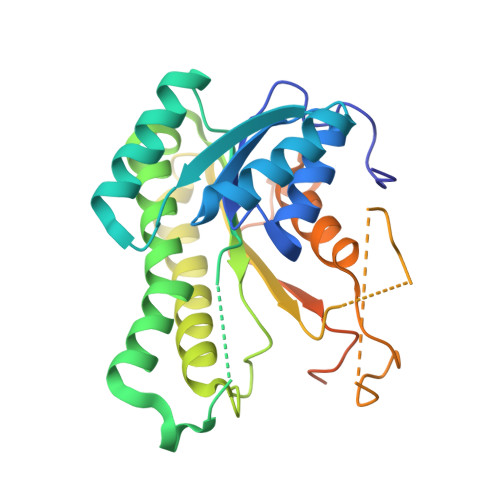Structural characterization of the Pseudomonas aeruginosa dehydrogenase AtuB involved in citronellol and geraniol catabolism.
Chen, Y., Jia, H., Liang, Y., Zhang, H., Che, S., Liu, R., Zhang, Q., Bartlam, M.(2020) Biochem Biophys Res Commun 523: 954-960
- PubMed: 31964529
- DOI: https://doi.org/10.1016/j.bbrc.2020.01.052
- Primary Citation of Related Structures:
6LLN - PubMed Abstract:
Pseudomonas aeruginosa can metabolize acyclic monoterpenoids (such as citronellol and geraniol) as the only carbon and energy sources. A total of seven proteins (AtuA, AtuB, AtuCF, AtuD, AtuE, AtuG, AtuH) have been identified in Pseudomonas aeruginosa as participating in the acyclic terpene utilization pathway. AtuB is a dehydrogenase enzyme responsible for citronellol and geraniol catabolism in the acyclic terpene utilization (Atu) pathway, although its structure and function have not been characterized to date. Here we report the crystal structure of AtuB from Pseudomonas aeruginosa PAO1 (PaAtuB) to 1.8 Å resolution. PaAtuB crystallizes in the space group F222 with a single monomer in the asymmetric unit. Analytical ultracentrifugation data shows that PaAtuB forms a stable tetramer in solution, which is consistent with the structure. Structural analysis confirms that AtuB belongs to the short-chain dehydrogenase/reductase (SDR) family. AtuB is predicted to bind NADP(H) from the crystal structure, which is confirmed by MicroScale Thermophoresis analysis that shows PaAtuB binds NADP(H) with a Kd value of 258 μM. This work provides a starting point to explore potential biotechnology and pharmaceutical applications of AtuB.
- College of Life Sciences, Nankai University, Tianjin, 300071, China.
Organizational Affiliation:
















